
A successful sustainable travel experience is about much more than measuring carbon; it’s about modeling a new way of living. Soraya Abdel-Hadi travels with Wilderness Scotland to find out more about their vision of the future of travel.

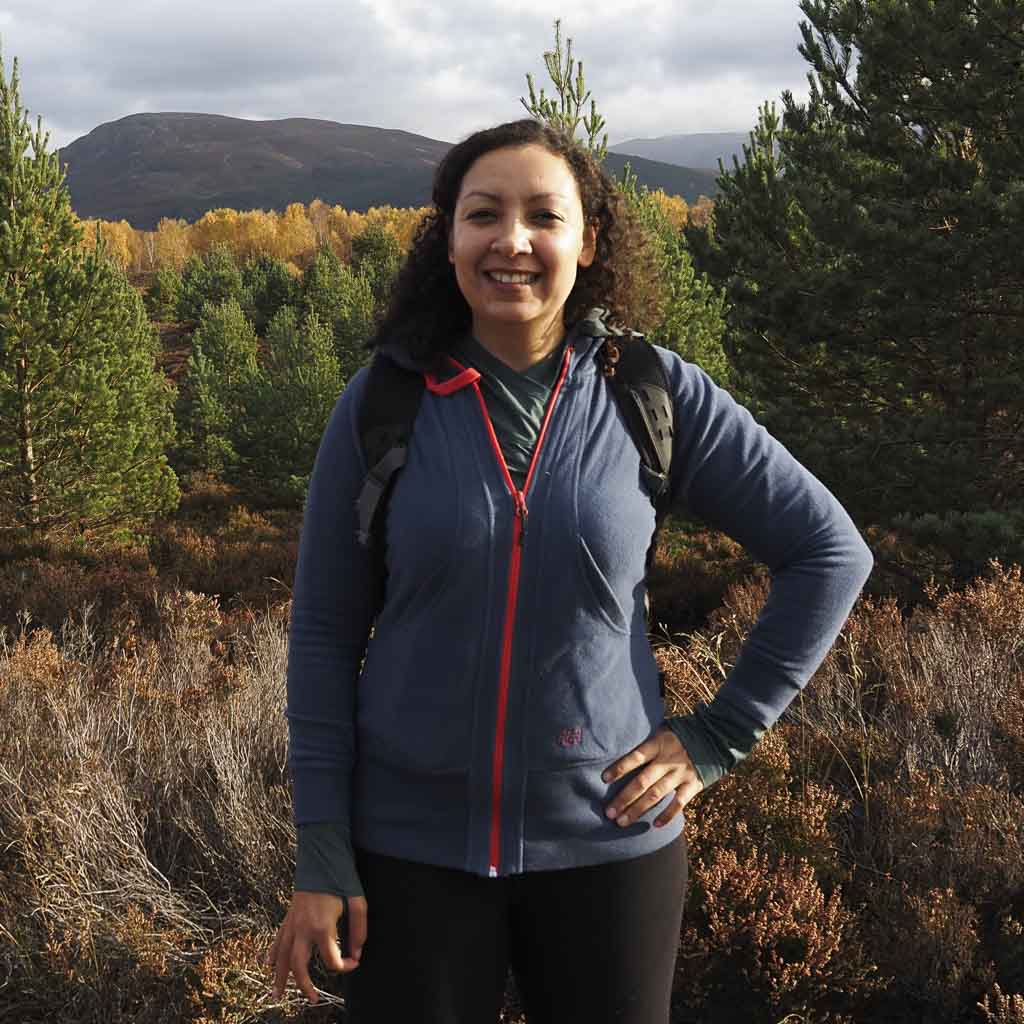
A successful sustainable travel experience is about much more than measuring carbon; it’s about modeling a new way of living. Soraya Abdel-Hadi travels with Wilderness Scotland to find out more about their vision of the future of travel.
“This is a showcase of how travel could be. We want to become a best-practice case study.” Ben Thorburn, Wilderness Scotland’s Head of Marketing is introducing us to their plans to lead the way in sustainable travel. “Every climate study says that we’re at a tipping point and the clock is ticking.”
Against this backdrop, our trip to the Scottish Highlands shows not just the commitment and carbon targets of this well-established adventure travel company, but a new way of traveling and—in the process—a different way of living.
Our first stop is Lynbreck Croft, a regenerative farm near Grantown-on-Spey in the Cairngorms National Park, north of Wilderness Scotland’s HQ in Aviemore. Regenerative farming aims to improve land through different farming methods and has gained popularity in recent years. Lynbreck is owned by Lynn Cassells and Sandra Baer. They fulfill most of their vegetable requirements from their garden and raise pigs, Highland cows and free-range chickens at their 150-acre croft.
“We only carry the number of animals we believe to have a regenerative impact on the land. The key to being highly productive is working with nature,” Lynn explains as she gives us the tour. “We live in a world where it’s all about competing, and nature is inherently collaborative. If we collaborate with nature, she repays us in abundance.”
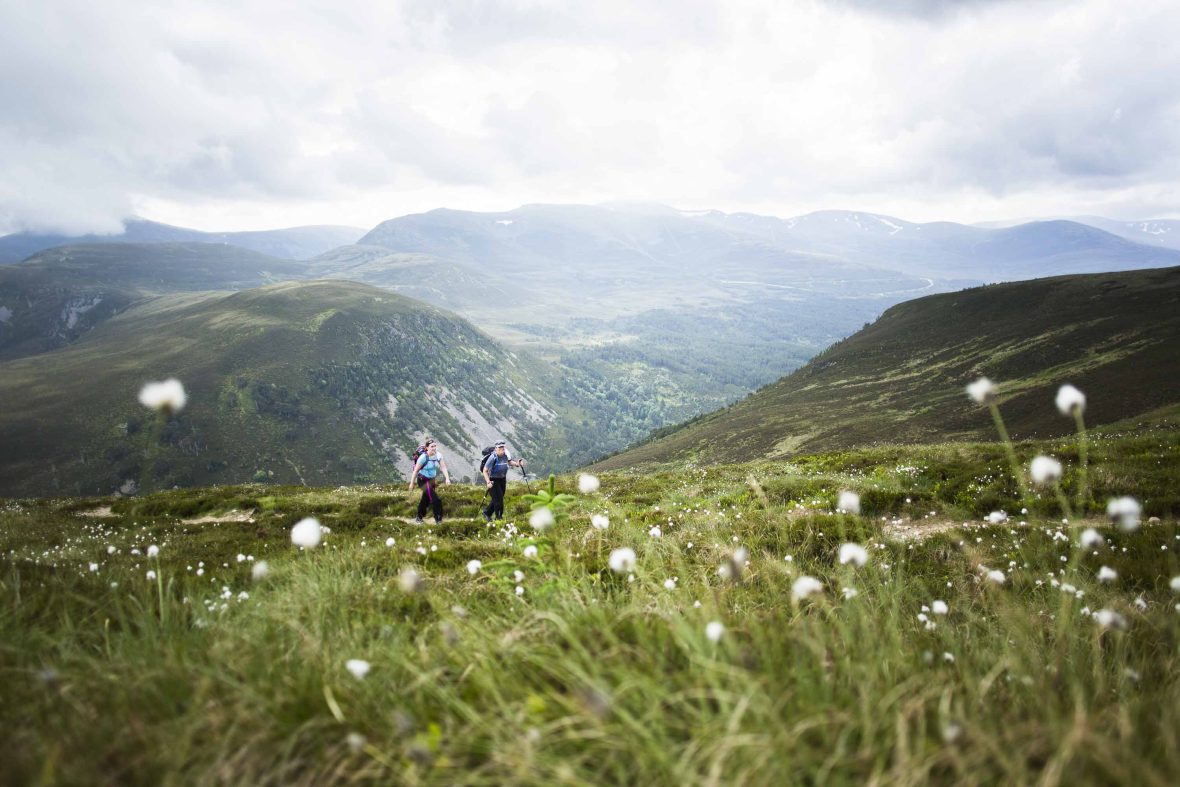
Following regenerative farming principles, they work with the “animalness of the animal and uniqueness of the land.” Lynn continues: “In the wild, large herbivores move through areas. A few days later, you get birds as the cow pats contain larvae. They feed and break down the pats by scattering them, feeding the soil with organic matter.”
Lynbreck replicates this with cattle and chickens. “I live the kind of life where soil is mega sexy because it’s the foundation of all life,” Lynn tells me. “The soil for a farm is your bank balance, your gold. To look after that in the long term, you nurture and enhance it. And when you eat good food from good soil, it makes you feel better—we nourish bodies and minds here.”
“There is no argument for running in an unsustainable way, and not recycling or building with materials that are natural or locally sourced.”
- Walter Micklethwait
Former vegetarians, Lynn and Sandra installed a butchery and make artisan sausages and burgers to sell locally alongside their eggs. But despite the success of their products, Lynn is clear that they only plan to sell produce in their immediate area, not ‘commercially.’ What’s most significant is that this style of farming could change how we think about food, how we produce it, and why.
It isn’t just Lynbreck eschewing commercialism in the Highlands. At the family-run Inshriach Estate, Aviemore, the next stop on our trip, Walter Micklethwait has holiday accommodation, runs courses, hosts festivals and distills craft gin. “Sustainability is not a problem with my ambitions, as modest as they are. I’m not planning to be in every duty-free shop in the world,” he explains as he pours us a taster.
Inshriach gin is made with hand-picked Scottish juniper and produced in small, numbered batches. “We also don’t have a bar license. There is a risk of opening yourself up too much. There is space, wilderness and wildlife around you—you would start to lose that.”
Walter believes you can’t separate sustainability and viability. “There is no argument for running in an unsustainable way, and not recycling or building with materials that are natural or locally sourced,” he tells me. “We’ve also built a community heating system. The legacy projects that I’m proud of are making the place more sustainable, more able to pay for itself, and are done with the right ethos.”
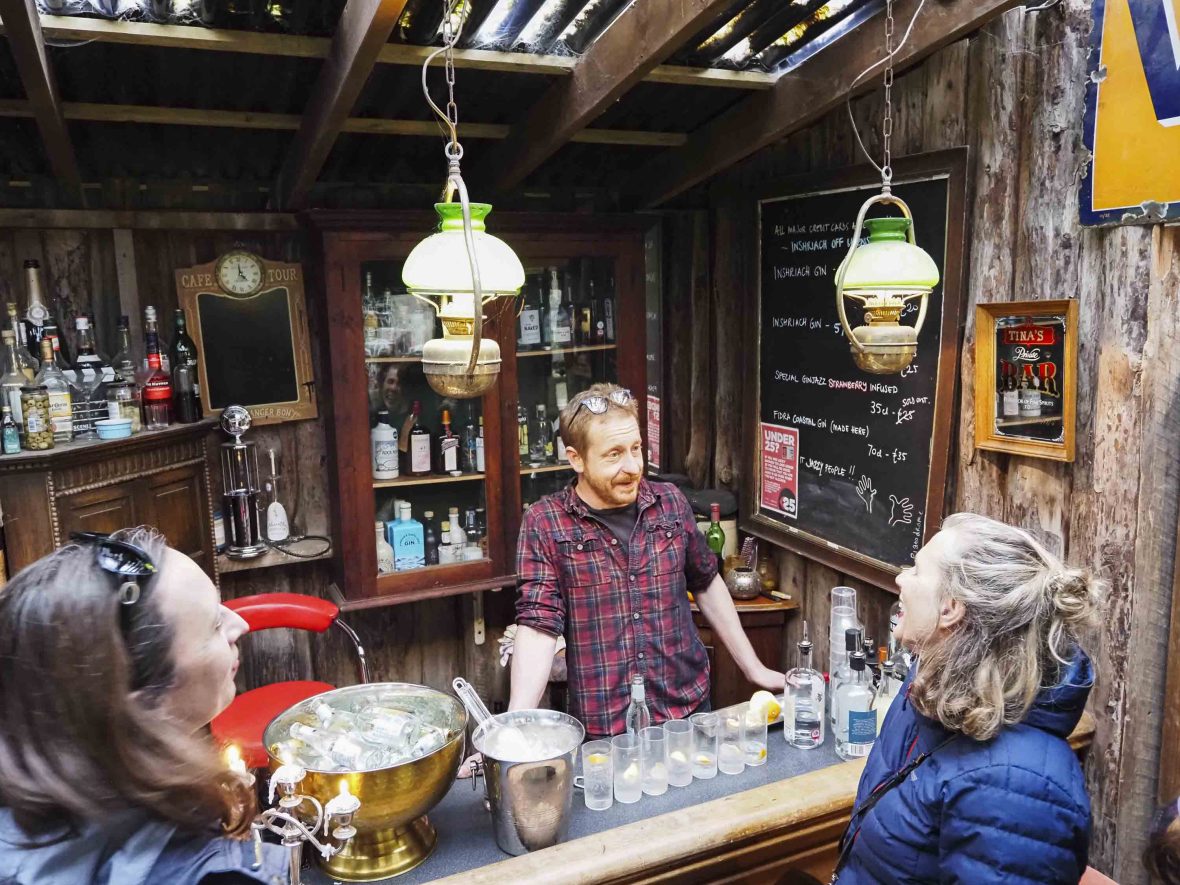
Wilderness Scotland’s focus is also on approaching sustainability with the right ethos. The building is run on renewable energy and has electric charging stations for the company’s Teslas, but they’re on a bigger sustainability journey. “We are one of the first in our space to utilize a science-based methodology to measure our carbon output with carbon consultancy ‘e-collective’,” explains Ben.
Apart from the transportation of clients and equipment in diesel vans (electric van technology needs better mileage and infrastructure), the sticking points for reducing impact are within partner operations. While the company can control emissions from their own resources, i.e. cars (scope one) or from power they buy (scope two), they can’t as easily control emissions from providers within their supply chain (scope three). For Wilderness Scotland, this means emissions from using independent accommodation providers. “Some providers were fantastic and they got back to us with their own carbon score,” explains Ben. “Others didn’t—it’s those we need to work with to lower their impact and take along on this journey.”
“Where we cannot reduce, we offset through carbon sequestration. We could be Net Zero today if we bought carbon credits, but that’s not the real deal.”
- Ben Thorburn/Wilderness Scotland
Some providers lend themselves particularly well to low-impact travel. We e-biked from the south end of Loch Laggan (38 miles southwest of Aviemore) to the Loch Ossian hostel where we spent the night. Located on the Corrour Estate, this hostel is only accessible by foot, train (via the scenic West Highland Line from Glasgow to Mallaig) or bike. It’s also fully off-grid and powered by the estate’s hydro system, which makes it one of the most low-carbon options on the company’s roster.
When looking at sustainability, the debate continues over the correct use of terms, the meanings of the words used and their scope. There is rarely one agreed definition for any term and ‘greenwashing’ is rife.
For emissions, the general consensus is that you should eliminate first, then reduce, then offset what you can’t eliminate, but not all offset is created equal. It includes everything from funding projects that plant trees or seagrass, right through to social projects that fund alternative stoves in off-grid communities or use of technological carbon capture. They vary in their efficacy, longevity and ability to be measured.
Companies that are making the most progress look past the accepted practices for their industry and aim to do better. Wilderness Scotland uses the United Nations Carbon Offset Platform and also supports local sequestration projects, through charities John Muir Trust and Trees for Life.
“We want to be Real Net Zero by 2030, while most of the industry is aiming for 2050,” says Ben. This goal is bold. With ‘Net Zero’, emissions released are balanced by removal of the same amount from the atmosphere (under the Science-Based Targets Initiative [SBTi] Net-Zero Standard, as much is eliminated as possible and only very difficult to eliminate emissions are balanced by removal or offset). In contrast, Real or True Zero requires that nothing is emitted. Wilderness Scotland is open about their journey. “Where we cannot reduce, we offset through carbon sequestration [the process of capturing and storing atmospheric carbon dioxide],” says Ben.
“It was really difficult to get natural regeneration recognized as a carbon sequestering tool, but we can now,” says Trees for Life operations manager Doug Gilbert. Natural sequestration is a process where trees capture carbon by taking in carbon dioxide in the photosynthesis process, using it for growth and tree functions.
The Scottish Highlands would once have been majority native, carbon-sequestering Caledonian forest. Now only 19 percent of the Highlands is woodland and just 5 percent is native. “After the First World War, we replanted with non-native tree species that grew quickly and straight in readiness for a new war,” Doug explains.
Trees for Life encourages natural regeneration of the landscape by producing and planting native species, offering advice and courses, and collaborating on conservation projects, such as lynx reintroduction. At Wilderness Scotland’s Dundreggan site, west of Aviemore, we learned about native Montane habitats (mountain slopes): Rowan, Scots pine, birch, juniper, willow, aspen and more. “Our objectives are to expand and to persuade others to expand, creating a native woodland in the Highlands of Scotland,” Doug says.
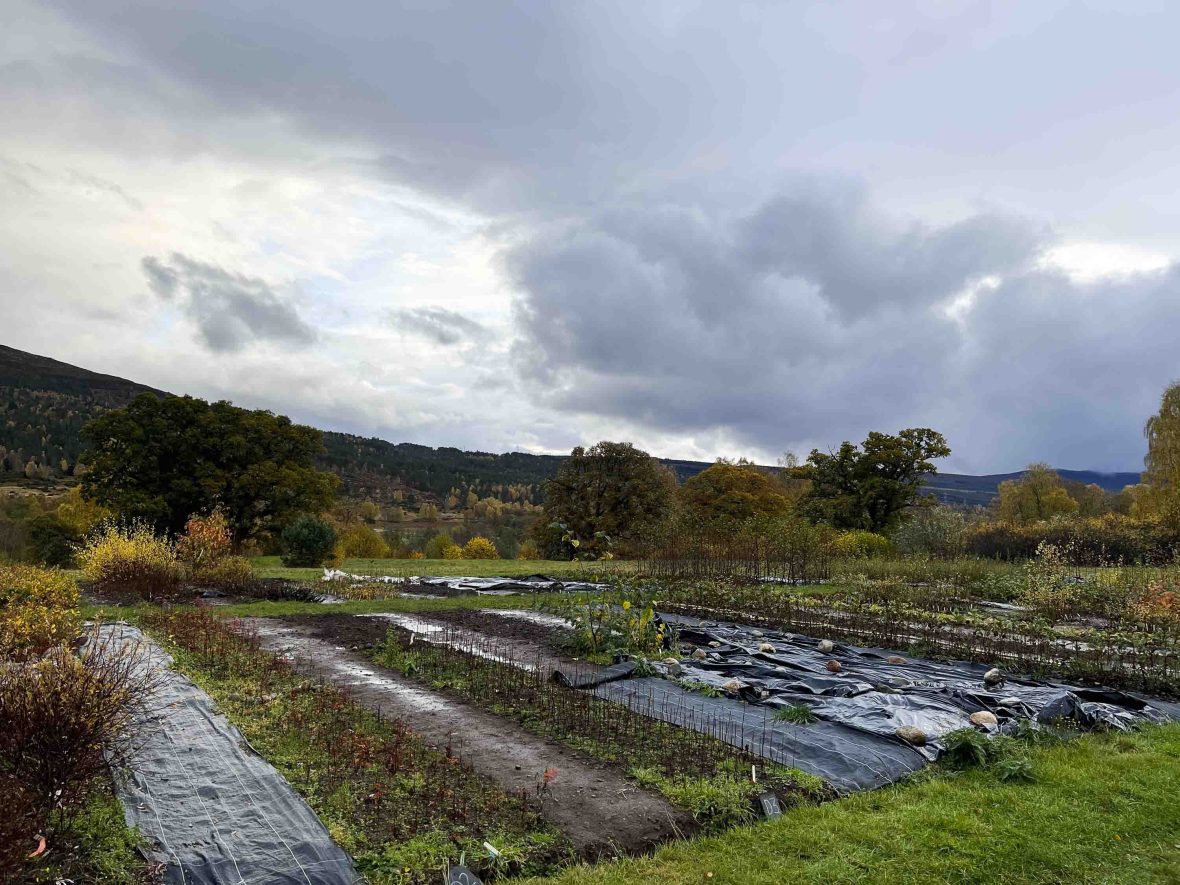
Of all Wilderness Scotland’s approaches to sustainability, the True Zero commitments are central to the future of travel. As an organization focused on human-powered nature-based adventures, their trips’ low-impact baseline puts their goals within reach.
But their vision for travel also has an educational thread on reducing commercialization, limiting growth and the importance of nature renewal. When it comes to the future of travel, it has always been a way for humans to learn more about themselves—it could be how we learn to live lower-impact lives, at home and away.
Companies like Wilderness Scotland are doing their best to create lower-impact offerings but, in essence, there is still no way to do truly sustainable travel. Every trip has an impact to a varying degree. However, for most of us, there is no truly sustainable way for us to live at home either – at least not within our current systems. The most important thing is to try to lower the impact of your life overall and lower-impact travel options are a part of that journey.
***
Adventure.com strives to be a low-emissions publication, and we are working to reduce our carbon emissions where possible. Emissions generated by the movements of our staff and contributors are carbon offset through our parent company, Intrepid. You can visit our sustainability page and read our Contributor Impact Guidelines for more information. While we take our commitment to people and planet seriously, we acknowledge that we still have plenty of work to do, and we welcome all feedback and suggestions from our readers. You can contact us anytime at hello@adventure.com. Please allow up to one week for a response.

Soraya Abdel-Hadi is an award-winning writer, artist and advocate for diversity in the UK outdoors. She believes in taking a holistic approach to making the world a better place, and writes about sustainability, nature and adventure travel. Soraya is Lonely Planet Sustainable Storyteller 2021 and founder of the All The Elements, a non-profit network for those increasing diversity in the UK outdoors.


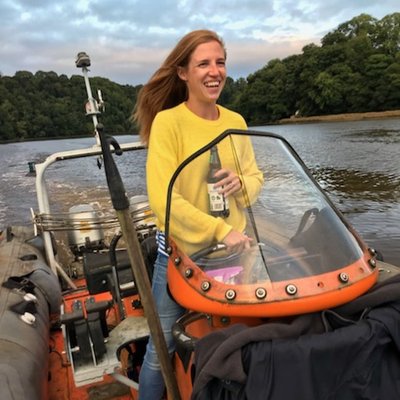



Can't find what you're looking for? Try using these tags: